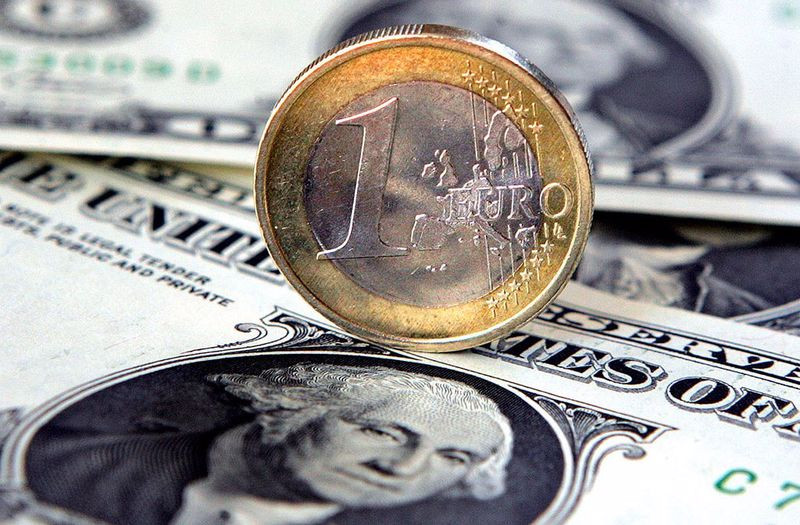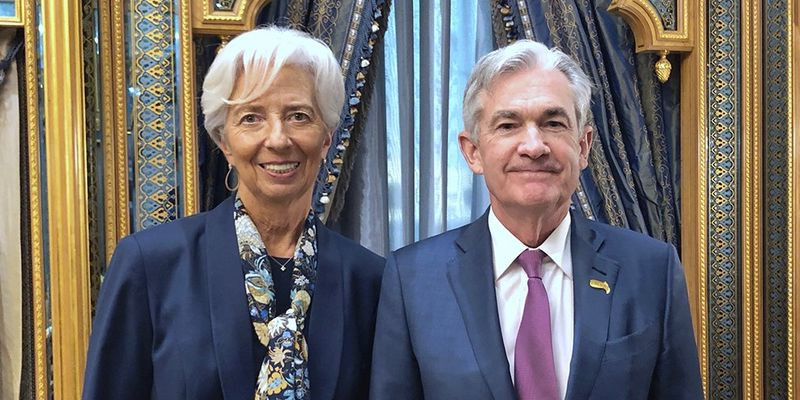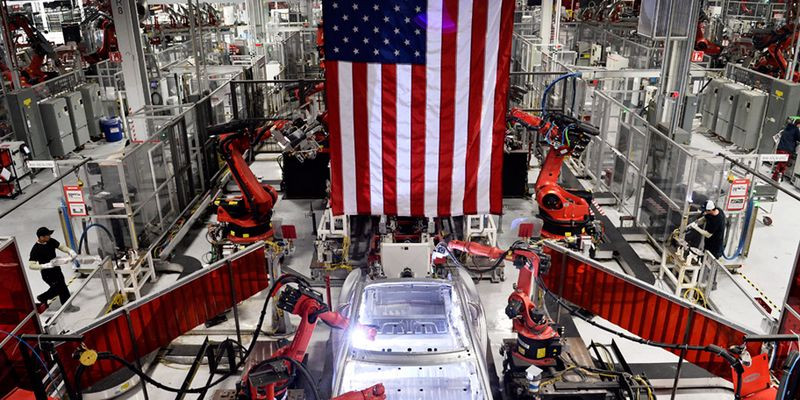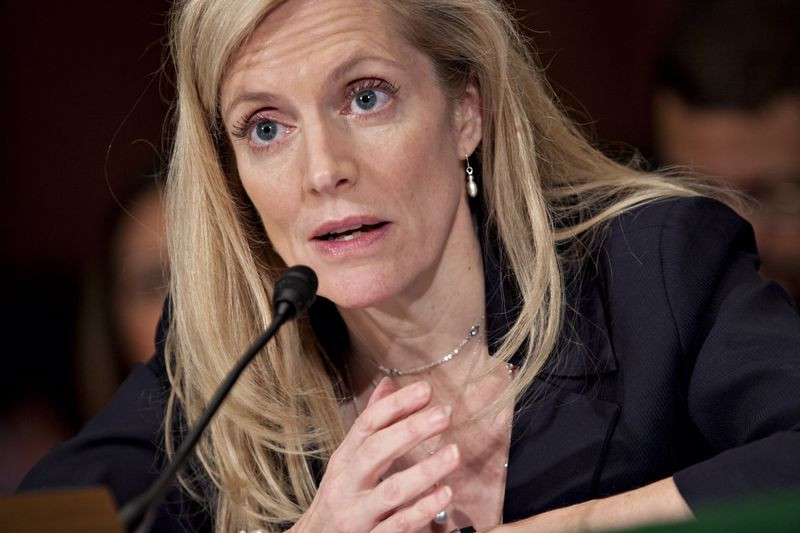
The greenback licked its wounds on Friday after falling in all directions on Thursday. Amid renewed demand for the dollar, the EUR/USD pair loses points gained in the previous session. The euro bulls seem to be taking a breather, suffering from altitude sickness. On Thursday, the main currency pair jumped by almost 100 points for key Wall Street indices, which were marked by a sharp increase. Thus, the S&P 500 rose by 1.84%, ending Thursday's trading at 4,176.82 points.
The main US stock indexes were trading in the red zone on Friday. The S&P 500 was already down about 13% from its record closing high in early January, and investors are debating whether the worst sell-off that dominated Wall Street in 2022 could be over.
"Volatility has become the norm, not the exception. Stocks are held hostage by inflation, and until inflation is brought under control, volatility is likely to remain high," U.S. Bank Wealth Management strategists say.
Meanwhile, the dollar continues its retreat, which began exactly three weeks ago. During this period, the USD index sank by more than 3% from 20-year highs, losing about a third of its annual profit.
And now the main question is whether we see a correction of the US currency before a new wave of strengthening, or we have witnessed the formation of a multi-year peak and the greenback will continue to decline.
In the first scenario, there should be a further build-up of momentum in favor of dollar bulls, and a new growth horizon will open for USD with potential targets near the highs of 2002-2003 at the level of 120 over the next 12-18 months.
In the second case, the breakout of long-term resistance at the level of 103 last month is false, and the greenback risks heading to the lower limit of last year's range, about 90.
UBS Wealth Management analysts believe that the rally of the US currency has exhausted itself. They indicate that investors have already taken into account both quantitative tightening and an increase in the Federal Reserve's interest rates in quotes. UBS also draws attention to the fact that other central banks, which have also started raising rates, are beginning to equalize conditions.
Meanwhile, ING analysts expect that the dollar will soon find the "bottom", given that the FOMC's rhetoric is still very hawkish.
They believe that the USD rate may fluctuate slightly, but pullbacks to 101 are buy signals, and the US currency will return to the highs of mid-May later this summer.
Westpac analysts agree with them, who predict that the greenback may drop to 100 in the near future, but believe that it is too early to talk about the peak of the multi-month bullish trend in USD.
As for the EUR/USD pair, it has been hovering around 200 points for the second week after it was able to bounce back from the five-year lows reached in mid-May in the area of 1.0350.
Then the prospect of the euro being able to trade in parity against the dollar for the first time in two decades became the hottest topic on Forex. And it all started with the European Central Bank meeting back in April, when the tone of the speech of ECB President Christine Lagarde seemed insufficiently hawkish to market participants. At the same time, traders observed the largest increase in the Fed rate since 2000 (by 50 bp).

However, concerns about a possible recession in America have recently intensified, and some investors have felt that if macroeconomic indicators for the United States deteriorate, the Fed may need to adjust its plans. In addition, a number of FOMC members expressed concern about the hasty rate hike.
The ECB, in turn, signaled that it is ready to join the campaign to normalize policy and put an end to the era of negative interest rates.
All this led to a reduction in long positions in the US currency and allowed the euro to rise from its knees.
According to MIG Bank analysts, the rebound of the EUR/USD pair is already very noticeable, and it is becoming increasingly difficult to consider it a temporary reversal.
"Although EUR/USD may go down again, there are factors indicating the emergence of better support for it. We remain skeptical about parity," they said.
The euro still marks rising highs and rising lows that support a breakthrough of $1.08 in the near term, said Scotiabank economists, who believe that the EUR/USD pair may rise to 1.1000 on the medium-term horizon. According to them, the fact that persistent inflation and a stable eurozone economy in the face of high energy prices support the likelihood of an ECB rate hike by 50 bps testifies to the strengthening of the euro.
At the same time, some experts admit that the movement of the single currency to $1.13 may be in the making, but it depends on how the situation with COVID-19 in China develops and whether the military conflict in Ukraine will again become a big obstacle for the main currency pair.
Rabobank strategists still see the probability of a decline in EUR/USD to 1.0300 in the future from one to three months. They point to the risks to the growth of the global economy and believe that the demand for safe haven assets, which include the US dollar, will remain high in the coming months.
Bank of America analysts intend to maintain a bullish USD sentiment throughout the summer, as the prospects for risky assets remain difficult.
"We are waiting for a long overdue hawkish ECB reversal in June, but we are not sure that this will be enough to support the euro. The market is already pricing in the end of ECB QE in June, and then – 4 rate hikes this year and almost 4 more next year. We agree with the market about this year, but we expect only 2 increases next year," they said.
USD fell by 0.8% to 101.78 points on Thursday, interrupting a two-day series of growth, while the EUR/USD pair and the key Wall Street indices were growing together.

Risk sentiment undermined the demand for a protective dollar, which was tripped up by a disappointing ADP report, according to which the growth in the number of jobs in the United States in May amounted to only 128,000, while experts predicted an increase of 300,000.
Thursday's dynamics of US stock indices indicates that market participants are now reacting positively to weaker economic data on the United States, believing that this may force Fed officials to think about a smoother tightening of policy.
"However, the irony is that the pressure on the US stock market may increase if the statistical data indicate the continued active growth of the US economy and raise the yield of government bonds to the highs of the current cycle," Saxo Bank analysts noted.
Recall that on June 1, the Fed began to reduce the amount of assets on its balance sheet, which reached $9 trillion.
"Uncertainty about the possible consequences of the quantitative tightening of the Federal Reserve, which will reach full force in three months, may also affect market sentiment," Saxo Bank analysts say.Investors have little doubt that the Fed will raise the rate by 50 basis points in June and July, but they are wondering about the future prospects of monetary policy in the United States.
"The Fed should raise interest rates as soon as possible to a level that no longer stimulates the economy. I see a couple of 50 basis point increases right away at the next two FOMC meetings to achieve this. And then we need to look around and see what else is going on," said Mary Daly, president of the San Francisco Federal Reserve.
At the same time, she warned that further inflation growth after the Fed raises rates to a neutral level also depends on other factors besides the willingness of US consumers to spend, such as the military conflict in Ukraine and quarantine in China to limit the spread of COVID-19, which have exacerbated existing problems in the supply chain.
Also, Daly said that she does not see the risks of a recession, since the tightening of the Fed's policy continues due to the strength of the economy.
"I see crowded restaurants, crowded airports. People understand that it's hard to afford something, and yet they keep spending, so we need to wait until it's all over. Summer will tell us a lot," she said.The head of the Atlanta Fed, Rafael Bostic, supported the idea of raising the cost of lending by 50 basis points following the results of the next two Fed meetings during the summer, but also spoke in favor of a pause in September.
Meanwhile, Cleveland Fed President Loretta Mester called on the US central bank to stand firm in the face of what could lead to market instability, slowing economic growth and even rising unemployment, as the central bank raises rates to combat unacceptably high inflation.
According to Mester, the Fed needs to raise rates to 2.5% as soon as possible, and then, probably, even higher.
"I wouldn't want to announce victory too early," she said of high inflation.

A similar opinion is shared by the Deputy Chairman of the Fed, Lael Brainard, who believes it is unlikely that the US central bank will take a break in the current cycle of interest rate hikes in the near future.
Although she stressed that the central bank's policy depends on the incoming data, but the most likely development of the situation will be the continuation of the rate hike until inflation is curbed.
"Now it is very difficult to see the reason for the pause. We still have a lot of work to do to reduce inflation to our target level of 2%," Brainard said.
Earlier, Fed Chairman Jerome Powell spoke in a similar vein, who said that the central bank will continue to raise rates until inflation decreases in a clear and convincing way.
The reality is that inflation in America is already high enough for this to become a political topic. And as long as this does not turn into a victory for the ruling party in the United States, the fight against inflation will remain a priority for the Fed.
Monthly data on the consumer price index in the United States will be published next week, on June 10, which will show whether the tightening of the Fed's policy is beginning to reduce the worst inflation in recent decades.
The markets, alarmed by concerns about the aggressive tightening of the central bank's policy, will hope for soft May data. This will strengthen the arguments in favor of a pause in the Fed's key rate hike later this year and put pressure on the dollar.
The US currency managed to find support in the area of 101.30-101.50.
On Friday, the greenback returns some of the positions lost on Thursday amid the release of official US employment data for May.
The number of jobs in the US non-agricultural sector increased by 390,000 people against the expected growth of 325,000. Unemployment in the United States in May remained at the April level of 3.6%.
In general, the positive release forced the key Wall Street indices to return to negative territory and gave confidence to dollar bulls, as investors' concerns about accelerating the normalization of the Fed's policy intensified.
The USD index is recovering and hopes to continue rebounding further up from the 102.00 mark on Friday.
This week, attempts to increase the US currency encountered resistance at the level of 102.75. Outside of this area, there are no noticeable resistance levels up to the 2022 high of May 13 in the area of 105.00.
As long as the three-month support line near 101.00 limits the fall, additional dollar growth looks likely on the short-term horizon.
The long-term prospects of the greenback look constructive as long as it is trading above the 200-day moving average, which is currently at 96.95.
The USD index can show a more significant decline only when America sees the peak of inflation in the rear-view mirror, and the Fed makes it clear that the worst is over.
So far, the central bank is not going to abandon its ambitious plans to tighten policy and continues to stand its ground, pointing to still dangerously high inflation rates.

"We will certainly do everything necessary to reduce inflation. Now this is our number one task," said Lael Brainard, Deputy Chairman of the Federal Reserve.
While unemployment is low and the number of vacancies is high, FOMC members are even more worried about inflation, fearing the unwinding of the wage-price spiral.
High inflation does not allow not only Fed officials to sleep soundly, but also their colleagues from the ECB.
Last month, the consumer price index in the eurozone reached a record 8.1%, forcing the ECB to act.The central bank's next meeting will be held next week. Although Lagarde made it clear that the rate hike will occur only in July, some market participants believe that the central bank should raise the cost of borrowing in June.
Even if this does not happen, the central bank will publish new forecasts, and they are likely to show stable inflation and not too depressing forecasts of economic growth. Instead of acting ahead of schedule, the Frankfurt-based financial institute could indicate that the July rate hike will be implemented in increments of 50 bps, which will return the cost of borrowing to zero.
Southern European countries, especially Italy, are likely to oppose a larger increase, but investors, nevertheless, will be looking for signs that the ECB's policy may be tightened faster.
Any hawkish position of the usually cautious ECB will lead to the growth of the single currency against its American counterpart.
The nearest resistance for the EUR/USD pair is in the area of 1.0780-1.0790, the breakdown of which will bring into play the levels of 1.0800, 1.0830 and 1.0855 (the Fibonacci correction level by 61.8%). Steady growth above the last mark will indicate a move to the psychologically important level of 1.1000.
On the other hand, the 1.0720 mark, near which the 50-day moving average passes, offers initial support before 1.0700 and 1.0680 (the Fibonacci retracement level by 23.6%). A breakthrough below the weekly low at 1.0630 will expose support at 1.0500.





















